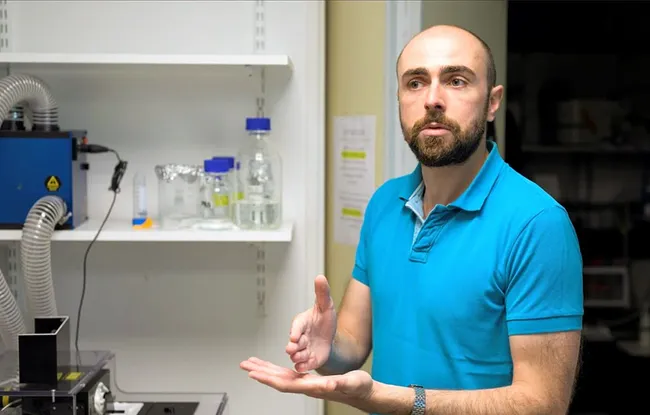- Home >
- Institut Curie News >
- Congratulations to Dr. Jean-Léon Maître, recipient of the Richard Lounsbery Award
The Richard Lounsbery Award has been presented each year since 1979, alternately to a French and an American researcher. It is intended to reward "outstanding achievements by French and American scientists" in biology and medicine, to stimulate these fields of research and encourage Franco-American scientific exchanges.
This year, Dr. Jean-Léon Maître, head of the Mechanics of Mammalian Development team (CNRS UMR3215 / Inserm U934 / Sorbonne Université), has been awarded the distinction for his studies on the origins of the forces responsible for cell deformation and displacement within mammalian embryos, including humans.
With his team, they meticulously studied the mechanical properties of the embryo prior to its implantation in the maternal uterus. This research led them to discover, among other things, the fundamental physical mechanisms governing the positioning of the first axis of symmetry of mammalian embryos, which is crucial for their attachment to the uterus.
Receiving the Richard Lounsbery Award is a tremendous honor that will hopefully shed light on the fascinating processes by which cells sculpt our bodies. We understand the shaping of mammalian embryos much better thanks to collaborations between scientists with a wide range of expertise and disciplines, from biology to physics and medicine. This is the very essence of the Curie model.
Confides Jean-Léon Maître.
Several researchers from Institut Curie have previously received the Richard Lounsbery award:
- 2018: Dr. Yohanns Bellaïche, Deputy Director of the Genetics and Developmental Biology research unit (CNRS UMR3215 / Inserm U934 / Sorbonne Université) and head of the Polarity, Division and Morphogenesis team (CNRS UMR3215 / Inserm U934 / Sorbonne Université)
- 1996: Prof. Daniel Louvard, Emeritus Researcher in the Dynamics of Intra-cellular Organization team (CNRS UMR144 / Sorbonne Université) and Honorary Director of Institut Curie Research Center from 1993 to 2013
Research News
Discover all our news
Celebration
The Immunity and Cancer research unit (U932) celebrates its twentieth anniversary
12/12/2025
Artificial Intelligence
08/12/2025


